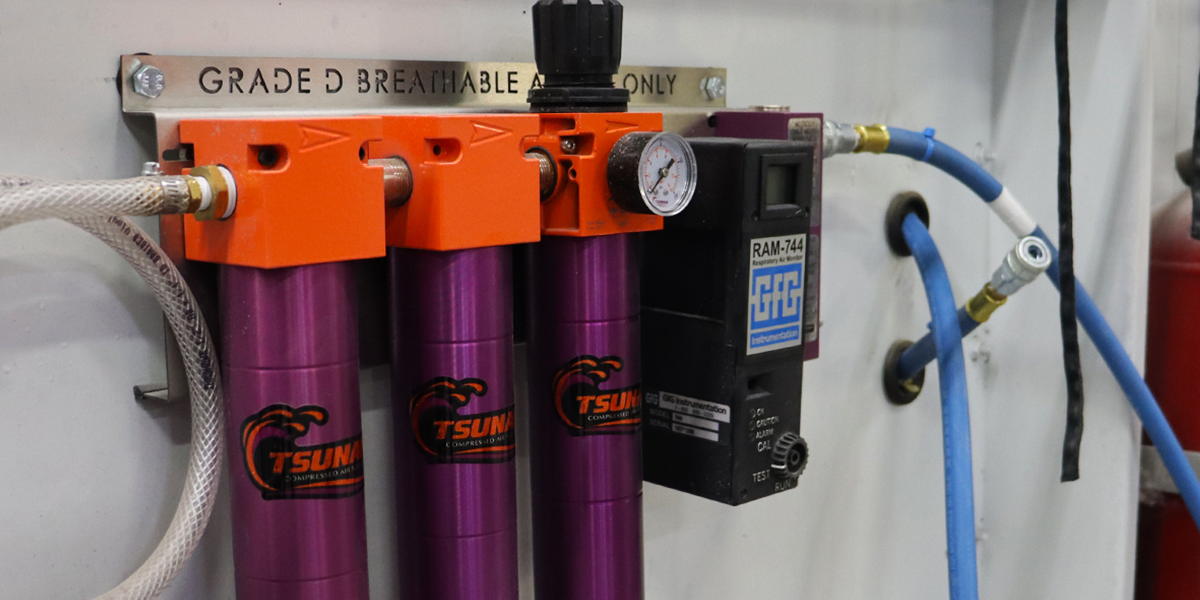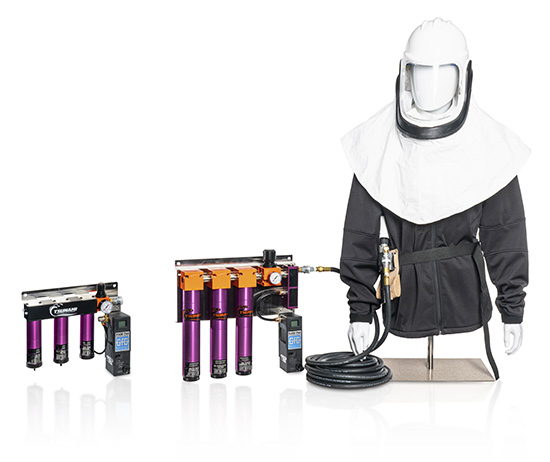
As the adage for workplace safety goes, “an untrained employee is a hazard to themselves and others.”
The same goes for the tools of a trade that aren’t meeting with safety requirements – next to an untrained employee, nothing causes a workplace injury or worse faster than non-compliant equipment or processes.
Grade D breathing air is an essential in all applications. It’s also something that must meet strict standards by multiple regulatory agencies.
Meeting Grade D breathing air requirements isn’t a one-time undertaking to tick a few boxes on a checklist. Rather, experts need to make meeting compliance standards part of daily routine – from equipment inspection & repair to ongoing employee education.
What is Grade D Breathing Air?
Grade D breathing air is compressed air piped through a respirator and intended for use as breathing air by contractors handling harmful materials. In order to be considered Grade D breathing air, the following must be true:
- The air must be free of any notable odor
- Condensed hydrocarbons can’t exceed 5 mg/m
- Carbon monoxide can’t exceed 20 parts per million (ppm)
- Carbon dioxide must be less than 1,000 ppm
- Oxygen must be 19.5 to 23.5% (by volume)
Grade D breathing air is often supplied from a compressor system located within the application area. This allows for a constant flow of air during the entire application process. The compressor must be installed and maintained in accordance with CGA G-7 standards, and filters must be changed regularly to ensure maximum efficiency and safety.
It’s important to remember that Grade D breathing air requirements are an essential part of safely completing certain tasks, such as spray foam application, and should not be taken lightly.
Personnel must also use approved respiratory protection when applying the product. Properly fitted full-face respirators with special filters designed for organic vapors and oil mists are usually recommended.
OSHA Qualifications for Grade D Breathing Air Requirements
The Occupational Safety and Health Administration (OSHA) regulates standards for Grade D breathing air. According to OSHA, compressed air used for respiratory protection must meet certain specifications, such as:
- Oil mist content of no more than 0.5 milligrams per cubic meter
- Water vapor content of no more than 5 milligrams per cubic meter
- Oxygen content of no more than 0.1 percent by volume
OSHA also requires employers to provide employees with the necessary respiratory protection when working with compressed air containing any hazardous air contaminants such as organic vapors or oil mists. Employers must also ensure that workers are trained in the proper use and maintenance of respiratory protection in order to ensure the safety of all personnel. Meeting OSHA Grade D breathing air requirements means a healthier work environment and prepared and informed staff.
By following these guidelines and adhering to all industry regulations, operators can ensure a safe and healthy working environment while also providing their customers with the best possible product.

CGA G-7 Standards Explained
The Compressed Gas Association (CGA) promotes “ever-improving safe, secure, and environmentally responsible manufacture, transportation, storage, transfilling, and disposal of industrial, medical, and food gases and their containers.” The association has more than 130 members worldwide, who are involved in all facets of the compressed air industry. The CGA has worked to develop and promote safety standards and practices for the industry for more than 100 years.
CGA G-7 standards serve as industry guidelines for Grade D breathing air, specifically designed to ensure the safety of spray foam installation experts. These standards are also important to maintaining compliance with regulations for work area safety.
CGA standards are not unlike those set by OSHA, in that Grade D breathing air must not contain:
- More than 0.5 milligrams of oil particles
- More than 5 milligrams of water vapor per cubic meter
Carbon monoxide monitoring standards for Grade D breathing air require that levels remain below the acceptable limit of 25 ppm.
The standards also require that compressor air filters be inspected and changed regularly to not only ensure efficiency, but also operator safety. With regular filter changes, those applying spray foam aren’t subjected to:
- Dust
- Dirt
- Oil particles
- Other dangerous contaminants
Regulation Compliance | Single-User vs. Multi-User ApplicationsWhen it comes to spray foam application, both single-user and multi-user applications require Grade D breathing air. Though CGA G-7 standards hold in both applications, there is one key difference. For multi-user applications, a compressor must also have an oxygen monitor that ensures each user is receiving Grade D breathing air. |
[How to] Testing Grade D Breathing Air
Testing Grade D breathing air is essential to ensure that it meets the required respiratory protection standards.
There are a number of tests available to check for oil particles, water vapor, oxygen, and other hazardous air contaminants.
One of the most common tests used to check Grade D breathing air is the Oil Mist Test. This test uses a special device called an oil mist detector to measure the number of oil particles in the air.
Gas chromatography, another testing option for air contaminants, is a test used in analytical chemistry. This process tests the purity of the air in question - for our purposes the compressed air that will be breathed during operation. This test is effective in ensuring the most stringent air regulations are met.
Grade D breathing air testing requirements have some specific requirements to meet, and as such testing should be completed by an experienced professional.
Grade D Breathing Air Requirements Conquered
Grade D breathing air requirements are in effect to reduce injury or death in the workplace. Optimizing the breathing air that installation experts have available to them means reliability and better morale in the workplace as well. OSHA provides specific requirements that, when met, provide that peace of mind all spray foam installation experts prefer when starting a job.
